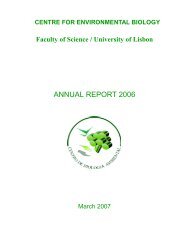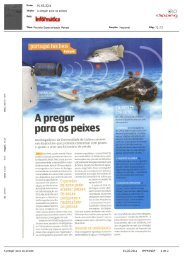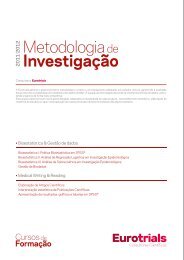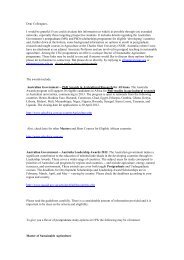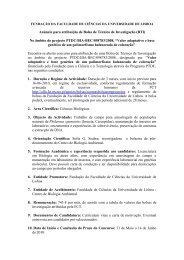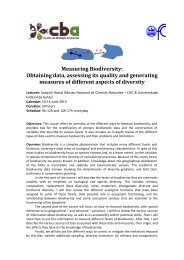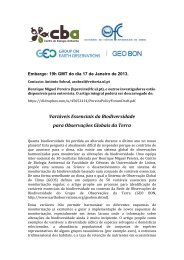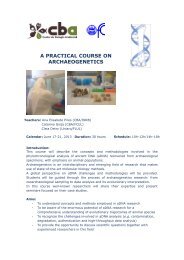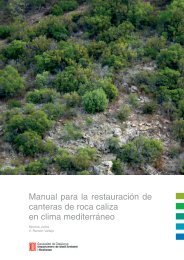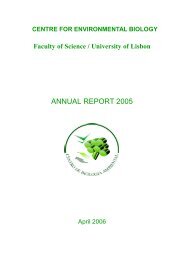European Red List of Vascular Plants - European Commission
European Red List of Vascular Plants - European Commission
European Red List of Vascular Plants - European Commission
Create successful ePaper yourself
Turn your PDF publications into a flip-book with our unique Google optimized e-Paper software.
Appendix 3. Methodology for spatial<br />
analyses<br />
Data were analysed using a geodesic discrete<br />
global grid system, defined on an icosahedron and<br />
projected to the sphere using the inverse Icosahedral<br />
Snyder Equal Area (ISEA) Projection (S39). This<br />
corresponds to a hexagonal grid composed <strong>of</strong><br />
individual units (cells) that retain their shape and<br />
area (864 km 2 ) throughout the globe. These are more<br />
suitable for a range <strong>of</strong> ecological applications than<br />
the most commonly used rectangular grids (S40).<br />
The range <strong>of</strong> each species was converted to the hexagonal<br />
grid for analysis purposes. Coastal cells were clipped to<br />
the coastline. Patterns <strong>of</strong> species richness (Figures 5, 14,<br />
21) were mapped by counting the number <strong>of</strong> species<br />
in each cell (or cell section, for species with a coastal<br />
distribution). Patterns <strong>of</strong> endemic species richness were<br />
mapped by counting the number <strong>of</strong> species in each cell<br />
(or cell section for coastal species) that were flagged<br />
as being endemic to geographic Europe as defined in<br />
this project (Figures 6, 15, 22). Patterns <strong>of</strong> threatened<br />
species richness (Figures 7, 16, 23) were mapped by<br />
counting the number <strong>of</strong> threatened species (categories<br />
CR, EN, VU at the <strong>European</strong> regional level) in each<br />
cell or cell section.<br />
124



